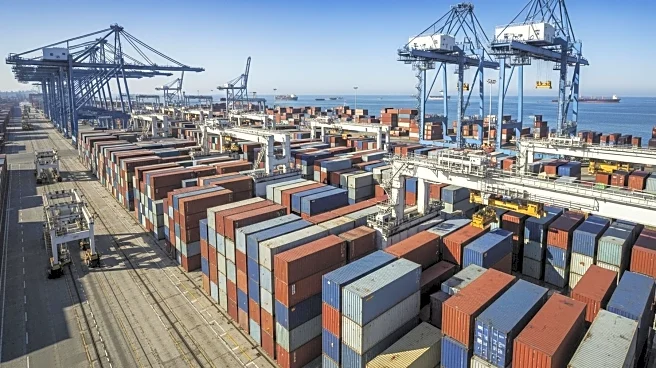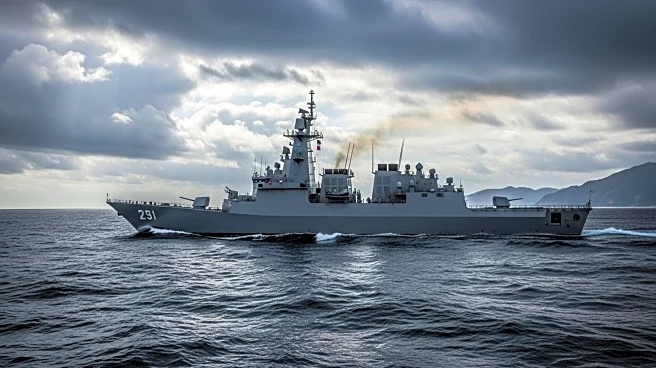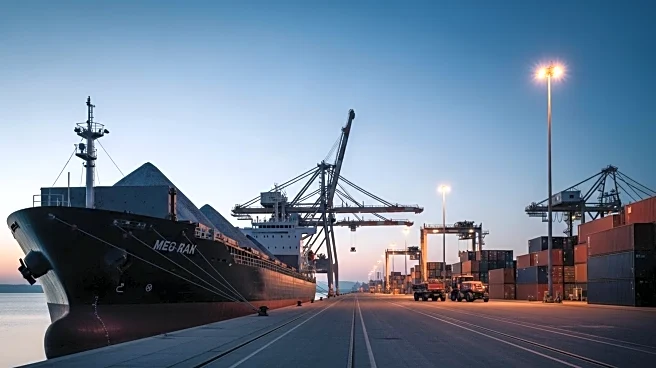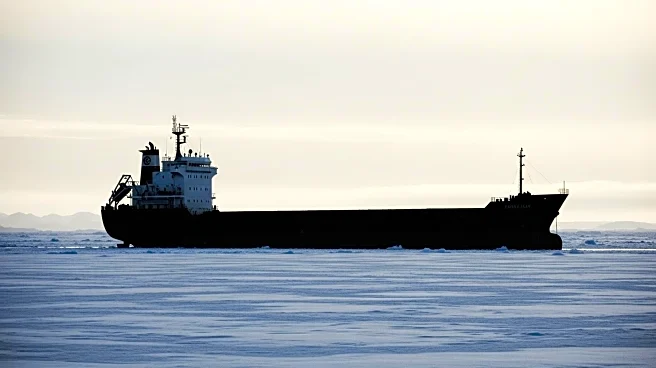What is the story about?
What's Happening?
The Port of Montreal and DP World Canada have entered into a joint development agreement to construct and operate a new container terminal at Contrecoeur on the St. Lawrence River. This project, which has been in planning for several years, aims to address the capacity limitations of the current facilities on Montreal Island. The new terminal is expected to handle 1.15 million TEU annually, representing a nearly 60 percent increase in the port's container handling capacity. DP World Canada will oversee the construction of the terminal's land-side facilities, including the container yard, building, utilities, and rail connection, under a 40-year operating agreement. The construction plan employs a hybrid model, with the port and Canadian Coast Guard managing the water-side responsibilities. Site preparation is anticipated to begin this year, with in-water work starting in 2026 and the terminal's commissioning slated for 2030.
Why It's Important?
The development of the new container terminal at Contrecoeur is significant for several reasons. It addresses the growing demand for container handling capacity in the Port of Montreal, which is nearing its current limits. By increasing capacity by nearly 60 percent, the project is expected to enhance the flow of goods through integrated road and rail connections, thereby boosting the region's economic activity. For DP World, this project marks its entry into the Port of Montreal, expanding its footprint in Canada where it already operates six port facilities. The long-term operating agreement also underscores DP World's commitment to investing in Canadian infrastructure, potentially leading to job creation and increased trade opportunities.
What's Next?
The next steps involve finalizing the design and construction terms between DP World Canada and the Montreal Port Authority. Once the final approvals are granted, site preparation will commence, followed by in-water work in 2026. Stakeholders, including local businesses and government entities, are likely to monitor the project's progress closely, given its potential impact on regional trade and employment. The successful completion of this terminal could set a precedent for future infrastructure projects in Canada, emphasizing the importance of public-private partnerships in addressing capacity challenges.
AI Generated Content
Do you find this article useful?














